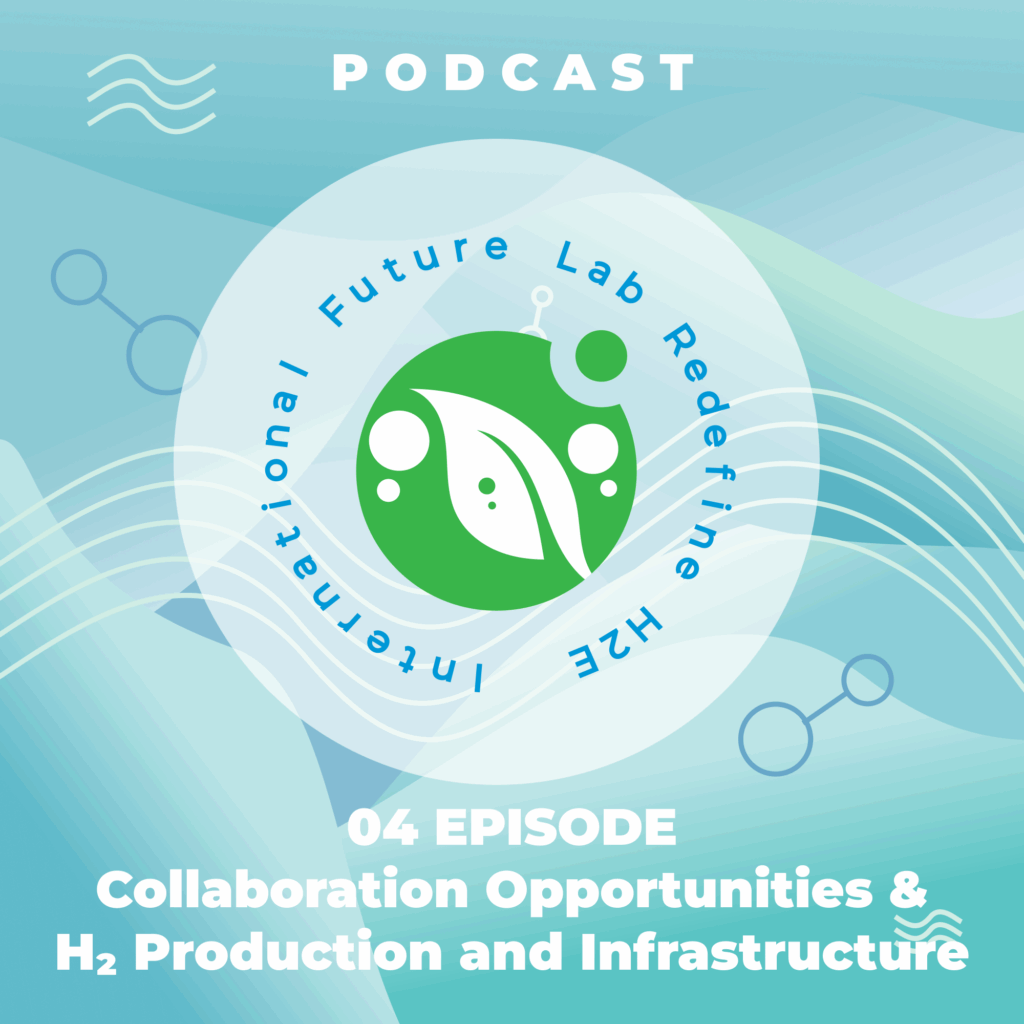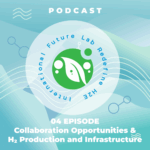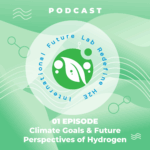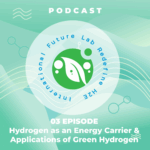EPISODE 04
Collaboration Opportunities, H₂ Production and Infrastructure & Spatial Analysis
Rethinking hydrogen. Redefining energy.
Whether it’s technical innovations, political frameworks, or economic developments, we deliver in-depth insights into one of the most exciting technologies driving the energy transition: green hydrogen.
We apologize for any technical deviations in the audio recordings.

About the episode
Collaboration is key to tackling global challenges. In this episode, we explore different collaboration opportunities between governments, businesses, and civil society to accelerate the transition to a green economy.
Topics:
- Challenges of hydrogen production: cost, efficiency, environmental impact
- Infrastructure for hydrogen distribution and storage
- Updates on projects and developments in hydrogen infrastructure
Interview
Mapping the Future of Hydrogen: How Spatial Analysis Can Shape a Resilient Hydrogen Economy
An interview with Dr. Iryna Doronina, researcher at Future Lab REDEFINE H2E
As the global race for clean energy accelerates, the challenge is not just what we build — but where. For Dr. Iryna Doronina, a researcher at the BMBF-funded Future Lab REDEFINE H2E, this question lies at the heart of hydrogen infrastructure planning.
“Hydrogen is a systemic connector — linking energy, infrastructure, and economy. Spatial analysis helps ensure that we design networks that are both sustainable and economically viable.”
What Is Spatial Analysis — and Why Does It Matter for Hydrogen?
Spatial analysis is the art of using geographic data to inform real-world decisions. In hydrogen planning, this means mapping renewable energy potential, demand centers, land-use constraints, and infrastructure access to find the most strategic locations for investment.
This approach avoids the costly pitfalls of fragmented planning — where isolated projects lack connectivity or overlap inefficiently. Instead, spatial data supports integrated hydrogen corridors that serve multiple stakeholders and align with national and cross-border energy strategies.
From Ukraine to Europe: Spatial Tools in Action
Dr. Doronina cites her work on the IEA’s roadmap “Unlocking Ukraine’s Hydrogen Opportunity” as a powerful example. By combining data on renewables, biomass, transport networks, and industrial demand, the team identified strategic production hubs and potential export routes to the EU.
Collaboration Across Borders
One of hydrogen’s defining challenges is its global nature. No country can go it alone. Cross-border infrastructure requires aligned regulation, financing, and long-term vision. Spatial analysis helps bridge those gaps by offering a shared, visual basis for coordination.
“When different actors — governments, industries, planners — can see the same data and systems, collaboration becomes far more effective.”
REDEFINE H2E actively fosters this kind of dialogue. As part of a network of researchers and institutions, it supports transparent, data-driven decision-making at the European level and beyond.
Challenges and Outlook: A Call for Data and Integration
Despite its promise, spatial hydrogen planning still faces barriers. We lack consistent, high-quality datasets in many regions — especially on infrastructure and land use. And even when models are accurate, there’s often a disconnect between analysis and policy implementation.
However, initiatives like the EU’s RED III directive — which requires the designation of Renewable Acceleration Areas by 2025 — could help bridge this gap. If governments integrate spatial tools into this process, we can fast-track hydrogen development while minimizing environmental and social conflict.
The Future: Smarter, More Adaptive Infrastructure Planning
Looking ahead, Dr. Doronina sees spatial analysis evolving rapidly with advances in AI, remote sensing, and open data. We’ll be able to simulate energy systems in real time, test planning scenarios, and better integrate hydrogen with other sectors like electricity and mobility.
Her vision? A hydrogen economy that’s not just green and efficient — but also inclusive and resilient.
Final Message: Think Spatially
“Where we build matters just as much as what we build. Embed spatial thinking early in your hydrogen strategy. Projects like REDEFINE H2E show that the groundwork is already being laid — now we need to scale it, coordinate it, and support it with robust data.”
In an increasingly interconnected energy world, maps may be just as important as molecules.
Show Notes
Meet the Hosts

Norina Auburger
PR Team Assistant
I am part of the BMBF-funded Future Lab Redefine H2E, a project located at the Chair of Energy Systems of the Technological University of Munich, Germany.

Dr. Iryna Doronina
Visiting Professor
I am a part of the Redefine H2E Team at the Technical University of Munich.




